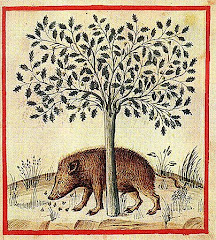Friday, 30 October 2009
Save Herbal Medicine demonstration, 2 Nov
in April 2011 new EU rules come into force regarding medicinal products, covering herbs. These EU rules, once applied would outlaw access to 95% of herbs, not only over the counter but also those prescribed for patients by professionals. Only herbal preparations that have been licensed will be marketed. The issue for the UK is that the government is planning to abandon it's committment to statutory regulation of this sector (due to costs) and leave it to be all but destroyed from May 2011. Such a move is likely to have severe effects on the accessibility to herbal medicine. Join in the demonstration outside Parliament, led by the National Institute of Medical Herbalists, against the government’s decision. Show your support and join in the demonstration.
The demonstration is in conjunction with a mass lobby of MP’s from 2-4 pm. Arrange a meeting with your MP to inform them of the importance of statutory regulations.
RSVP afifah.hamilton@ukonline.co.uk
For more information click here.
Wednesday, 9 September 2009
Herby Event: Feast on the Bridge
At the Living Medicine stall, which is on the north side of the bridge, medical herbalists and some generous volunteers will be serving various herb teas, free to all, to taste and take away. People can find out both how simple and delicious fresh and dried herb teas can be, as well as discover more about their many medicinal uses.
Herby Event: Distinguished Ethnobotanist Lecture 2009
Indigenous peoples of northwestern North America are identified by anthropologists mainly as fishers and hunters. Yet, their traditional food systems include many, diverse plant species, as well as some marine algae, lichens and fungi. Plant foods include roots and other underground parts, green leaves and stems, many fruits, inner bark of trees, and a range of beverage teas. These foods collectively provide essential nutrients and have been part of a healthy Indigenous diet over thousands of years. The knowledge required to use these nutritional resources effectively and sustainably is part of an overall system of knowledge that incorporates ecological understanding, taxonomic, and biogeographical expertise, specialized practices of harvesting, processing, and maintaining resource populations, and belief systems that guide their use and management. Women have been the holders and practitioners of much of this plant-based knowledge.
In recent years, for a variety of reasons, many of these important Indigenous foods have been declining in use, a dietary trend known as the nutrition transition, that is occurring with local and Indigenous Peoples' food systems worldwide. People who once gathered and prepared healthy local food are turning towards more processed and marketed foods many of which are high in unhealthy fats and refined carbohydrates. The result is increased risk of diabetes and heart disease and other health problems. Today, Indigenous communities are using a range of strategies to maintain and strengthen their use of their original foods, and have found partners in universities, NGOs, and government agencies to support this endeavor.
In this presentation, I will describe some of the diverse Indigenous wild foods of the Cascadia Region, including Angiosperms, Gymnosperms, and some Algae, Lichens and Fungi, and discuss the ways in which Indigenous Peoples have maintained and enhanced these resources, what has happened to these food species, and how they are now being reclaimed and re-incorporated into Indigenous Peoples' foodways.
Admission is free but must be prebooked - visit the website.
The Jodrell Laboratory is accessed via the Jodrell Gate on Kew Road, more or less halfway between the Main Gate (Kew Green) and the Victoria Gate. The Jodrell Gate is 10 minutes walk from Kew Gardens and Kew Bridge stations. Please be sure to arrive in good time - any seats unoccupied at 16.50 may be redistributed to the wait list. After the talk, audience members are welcome to join the speaker in "The Botanist" pub on Kew Green.
This talk is sponsored by the Global Diversity Foundation and the Centre for Economic Botany at Kew
Queries: erin@globaldiversity.org.uk
Saturday, 15 August 2009
Herbal Medicine Conference in Lampeter and Herbal Medicine Regulation in the UK
In this post:
2. Public consultation on alternative medicine regulation in the UK was recently announced. I can't stress just how important it is that we all educate ourselves as to the pros and cons of this kind of healthcare regulation and then make our views heard before it's too late, please have a look at the bottom of this post for a variety of resources and thoughts on this matter.
Western Herbal Medicine:
Ancient Heritage and Modern Practice
August 25th to 29th 2009
University of Wales, Lampeter
This three-day conference will explore various aspects of Western Herbal Medicine from Ancient times, through the Middle Ages and Renaissance, to modern discussions and the dialogues with Chinese and Ayurvedic Medicine. The main focus will be upon the Western tradition of constitutional and energetic medicine. This often-neglected, but rich and vital tradition will be explored from various angles. In addition to scholarly presentations by experts in the field, there will be workshops, exhibitions, and an optional trip to the National Botanic Garden of Wales. There will also be plenty of social and networking opportunities, as well as a closing Twmpath, or Ceilidh. The event is largely aimed at medical herbalists, but practitioners and academics from other disciplines would also be very welcome.
This joint event has been developed by the Body Programme of the University of Wales, Lampeter, in conjunction with the National Institute of Medical Herbalists (NIMH). The University, with its long-established reputation for research in these areas, is now committed to developing academically-informed, humanities-based CPD events for a range of CAM practitioners in careful liaison with professional bodies such as NIHM. Body Programme also supports post-graduate work up to doctoral level (PhD). Its flourishing Master’s programme, The Body: Eastern and Western Perspectives, features related modules such as: Ancient Medicine, The Subtle Body, The Holistic Approach to Healing, The Western Esoteric Tradition, Medical Astrology, Ayurveda, and The Understanding of the Body in Traditional Chinese Medicine (see: www.lamp.ac.uk/body).
The fee for the whole event, including full-board for four nights, is just £240; excellent value, we hope you'll agree. The University offers good-quality en-suite accommodation, as well as a restaurant and a café. It is the smallest University college in Europe, with a small and friendly campus in the heart of the rural market-town of Lampeter. The town itself is set in the beautiful countryside of West Wales, only fifteen minutes from either the coast or the depths of the hills.
Provisional Programme Outline
The final timetable, with further details of our speakers and events, will be available on the NIMH website nearer the time (www.nimh.org.uk).
Tuesday 25th August
- From 4pm - arrivals, registration and afternoon tea.
- 7pm Dinner and Reception
Wednesday 26th August
- 8.00 Breakfast
- 9.30 Paracelsus and the Western Herbal Tradition by Dr Clare Goodrick-Clarke and Professor Nicholas Goodrick-Clarke (Centre for Esotericism, University of Exeter)
- 11.30 Herbs and Hippocrates by Dr David Noy (Department of Classics, Lampeter)
- 1.00 Lunch
- 2.00 Demonstration of Distillation of Aromatic Herbs given by Joe Nasr (Dip Phyt, DO, MNIMH)
- 3.30 Break
- 4.00 Workshop on Traditional Welsh Herbal Medicine (to be confirmed)
- 6.00 Dinner
- 7.30 The Galenic Temperaments in the Writings of Nicholas Culpeper by Graeme Tobyn (Author of Culpeper's Medicine)
Thursday 27th August
- 8.00 Breakfast
- 9.30 Ancient Cosmology and Medical Astrology given by Dr Nick Campion (Sophia Centre, Lampeter University), and Jane Ridder-Patrick (Lampeter University & NIMH).
- 11.00 Break
- 11.30 Optional trip to National Botanic Garden of Wales including lunch and guided tour, taking in the the Apothecaries Garden, the Mediterranean Glass-house, and the Apothecaries Gallery. There will be a buffet lunch in our own dedicated marquee. There is a small supplement to cover travel, entrance, and tour fee (please see booking form).
- For those not wishing to visit the gardens, there will be alternative Lampeter-based activities, or participants may wish to take free time and make independent visits to the hills and coast. There are many local gardens, organic farms and herb growers whom you might also wish to visit.
- 6.00 Dinner
- 7.30 Herbs and Medicine in Medieval Wales, Dr Morfydd Owen (Centre for Advanced Welsh & Celtic Studies, Aberystwyth). Introduced by the President of the University, Dr Brinley Jones
Friday 28th August
- 8.00 Breakfast
- 9.30 Herbalism in the Ayurvedic Tradition, Anne McIntyre (FNIMH, Ayur HC)
- 11.00 Break
- 11.30 A Comparison of the Principles and Practices of Chinese & Western Medical Herbalism, Michael McIntyre (FNIMH, MBAcC, FRCHM).
- 1.00 Lunch
- 2.00 Holism in the Western Tradition by Vicki Pitman (M.Phil, MURHP, MIFA)
- 3.30 Break
- 4.00 Panel Discussion on Modern & Comparative Herbalism
- Dinner
- Twmpath (Ceilidh) featuring local Welsh musicians
Saturday 29th August
- Breakfast
- Open Day from 10.30 till 4pm featuring stalls, exhibitions, presentations, and workshops
- Regional Meeting of Welsh NIMH Herbalists at 11am in University
Exhibitions and bookstalls will be on display throughout the week. This will include an exhibition of exquisite ancient herbals, dating back as far as the fifteenth century, from the University’s collections.
I have an extensive price list with details for full board and single day attendance and everything in between. It's too long to include here so if you're interested I can forward it to you. Please e-mail me at kpatmore@care2.com
Public consultation on alternative medicine regulation:
Monday, 27 July 2009
Last Stop London
Friday, 10 July 2009
What Next?
Monday, 6 July 2009
Monday, 29 June 2009
Wales Smithsonian Cymru - Festival day 3-5


Friday, 26 June 2009
Wales Smithsonian Cymru - Update
Wales Smithsonian Cymru - Festival day 2




Tuesday, 23 June 2009
Wales Smithsonian Cymru - Plant Medicine (days 1 & 2)
















